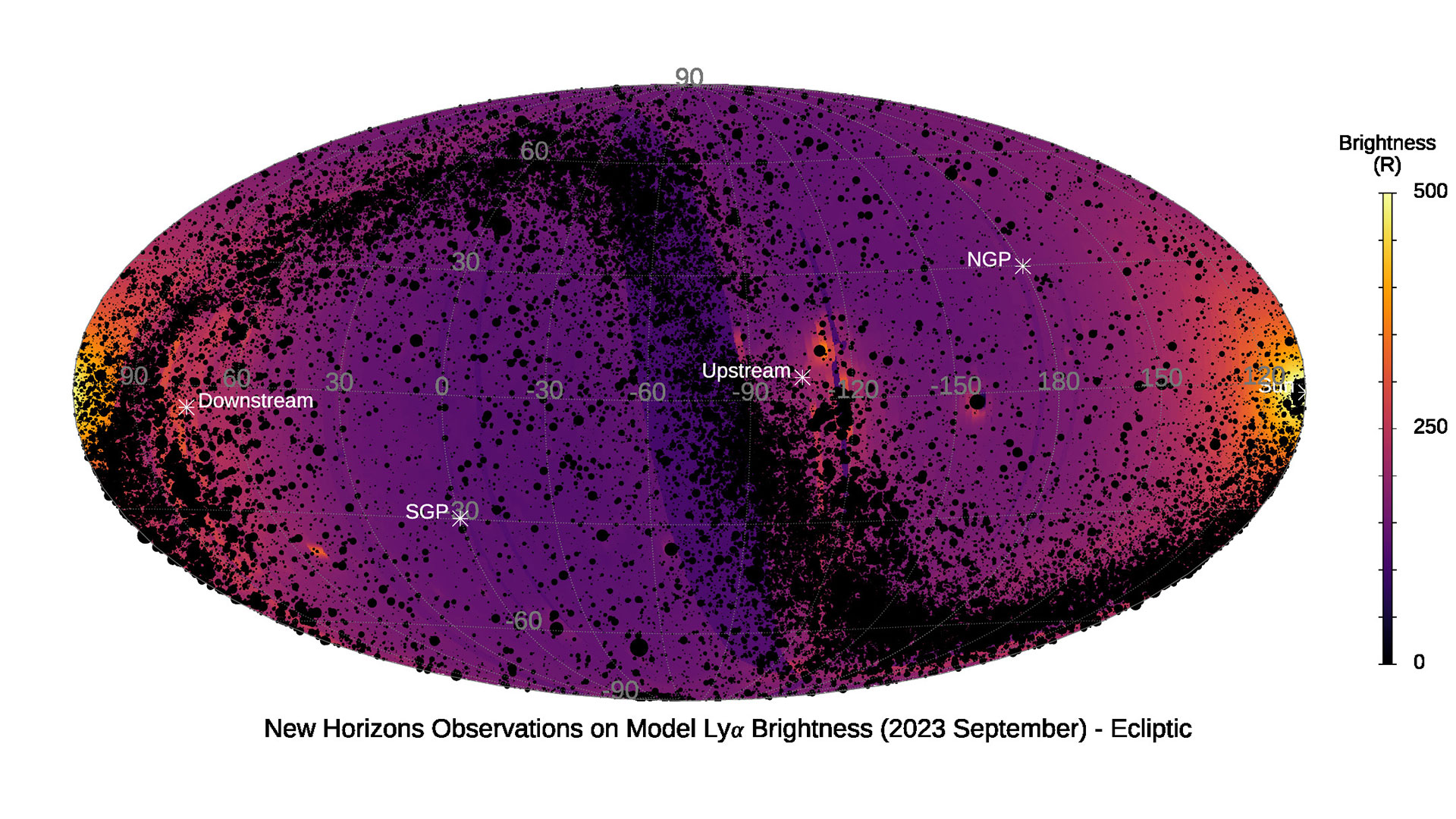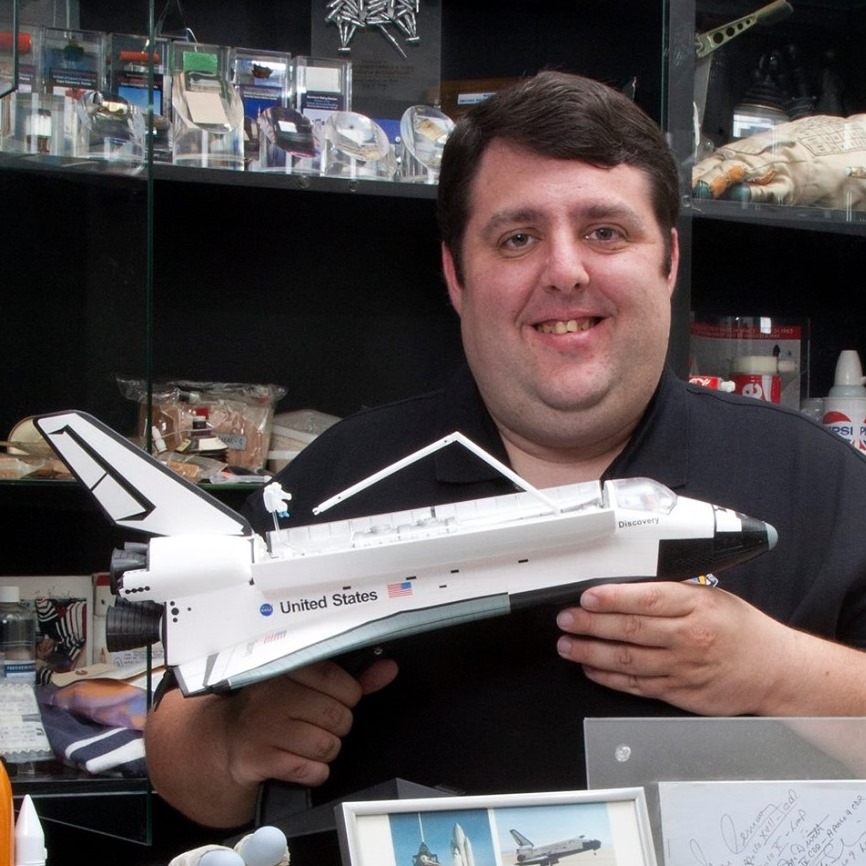New Horizons' new map of the galaxy | Space photo of the day for April 30, 2025
Extensive observations by NASA's New Horizons mission have resulted in the first-ever map of the galaxy in an ultraviolet wavelength.

A new study from the NASA New Horizons mission team at the Southwest Research Institute have resulted in a first-of-its-type map from the Milky Way galaxy in an ultraviolet wavelength, revealing details in the region around our solar system.
What is it?
This spectrograph map, generated from data collected by NASA's New Horizons probe, depicts the relatively uniform brightness of the ultraviolet (UV) "Lyman-alpha" background surrounding the sun and its area of influence.
"Understanding the Lyman-alpha background helps shed light on nearby galactic structures and processes," said Dr. Randy Gladstone with the Southwest Research Institute (SwRI) in Colorado. "This research suggests that hot interstellar gas bubbles like the one our solar system is embedded within may actually be regions of enhanced hydrogen gas emissions at a wavelength called Lyman alpha."
Lyman-alpha is a specific wavelength of UV light emitted and scattered by hydrogen atoms. It is useful when studying distant stars, galaxies and the interstellar medium, as it can help detect the composition, temperature and movement of these distant objects.
On this spectrograph map, the black dots represent approximately 90,000 known UV-bright stars in our galaxy.
Where is it?
New Horizons, which began as the first mission to flyby Pluto, collected baseline data about Lyman-alpha emissions during its initial journey to the small, icy world.
After the spacecraft's primary objectives at Pluto were completed, New Horizons' ultraviolet spectrograph (named "Alice") was used to make more frequent surveys of Lyman-alpha emissions as New Horizons traveled farther from the sun. These observations included an extensive set of scans in 2023 that mapped roughly 83% of the sky.
Why is it amazing?
Before this map was released, scientists theorized that a wall of interstellar hydrogen atoms would accumulate as they reached the edge of our heliosphere — the region of our galaxy where the solar wind from our sun reaches and interacts with the interstellar medium. New Horizons data saw nothing to indicate that this "wall" was an important source of Lyman-alpha emissions.
"These are really landmark observations, in giving the first clear view of the sky surrounding the solar system at these wavelengths, both revealing new characteristics of that sky and refuting older ideas that the Alice New Horizons data just doesn't support," said Dr. Alan Stern. the mission's principal investigator at SwRI. "This Lyman-alpha map also provides a solid foundation for future investigations to learn even more."
Want to know more?
Read more about New Horizons' mission after leaving Pluto and other recent research based on Lyman-alpha emissions. You can also find the scientific paper describing the SwRI map and its findings in The Astronomical Journal.
Breaking space news, the latest updates on rocket launches, skywatching events and more!

Robert Pearlman is a space historian, journalist and the founder and editor of collectSPACE.com, a daily news publication and community devoted to space history with a particular focus on how and where space exploration intersects with pop culture. Pearlman is also a contributing writer for Space.com and co-author of "Space Stations: The Art, Science, and Reality of Working in Space” published by Smithsonian Books in 2018.
In 2009, he was inducted into the U.S. Space Camp Hall of Fame in Huntsville, Alabama. In 2021, he was honored by the American Astronautical Society with the Ordway Award for Sustained Excellence in Spaceflight History. In 2023, the National Space Club Florida Committee recognized Pearlman with the Kolcum News and Communications Award for excellence in telling the space story along the Space Coast and throughout the world.
You must confirm your public display name before commenting
Please logout and then login again, you will then be prompted to enter your display name.
